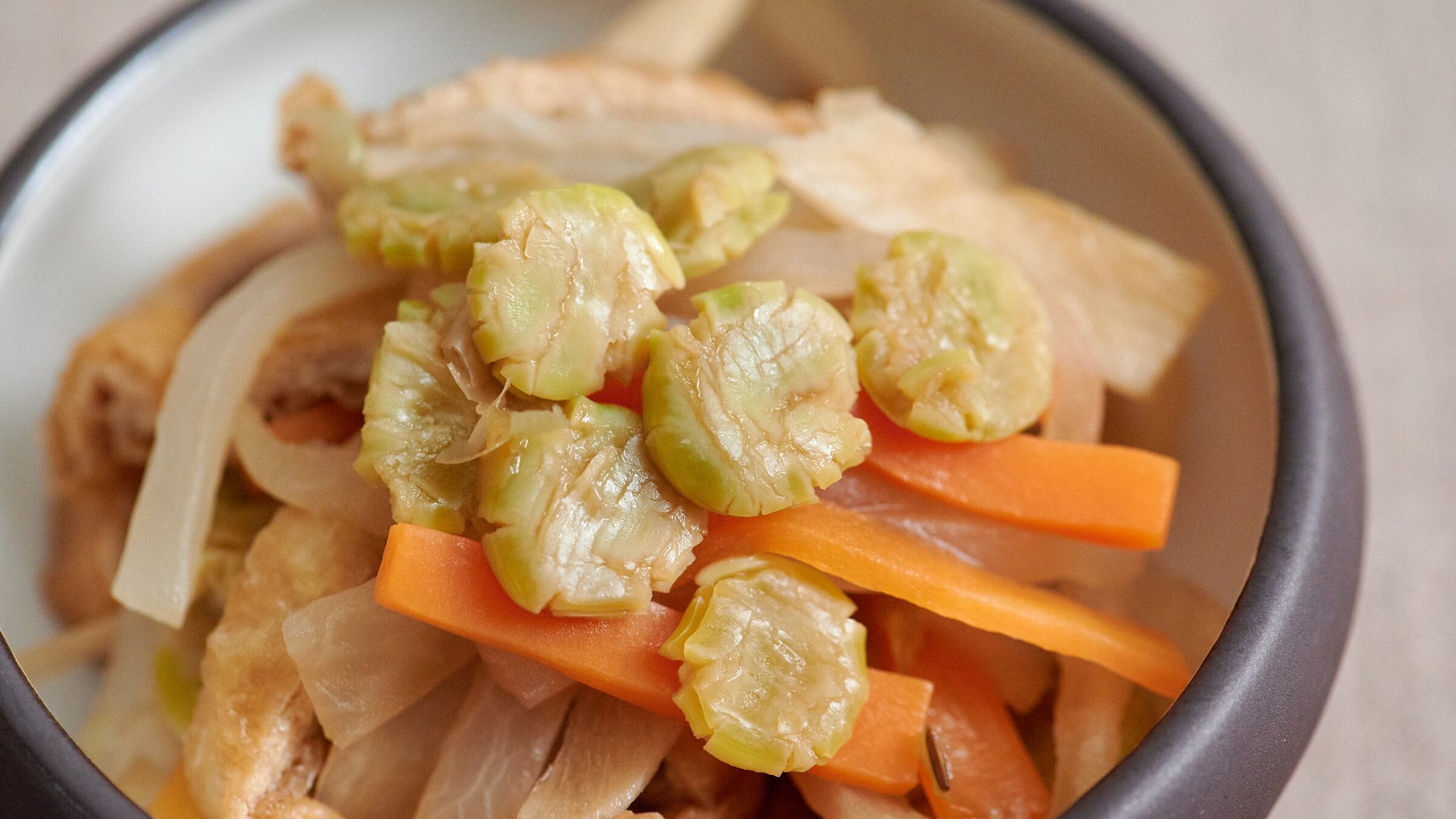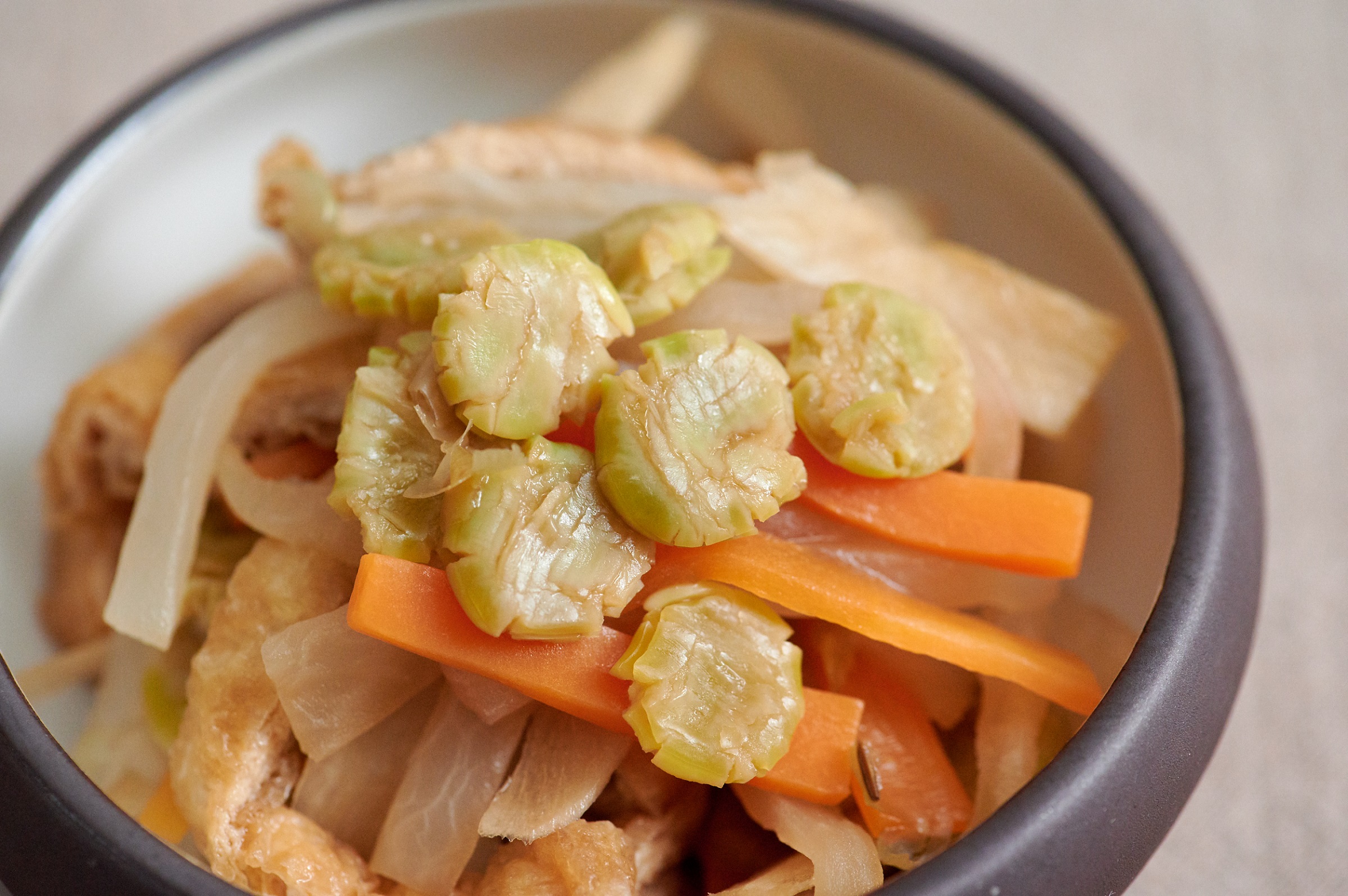
Alright, let’s head over to Ishikawa Prefecture and check out “Aimaze,” a comforting and hearty dish from the Noto region. This is a simple but flavorful medley of simmered vegetables, showcasing the best of what the local soil has to offer. It’s a dish with deep roots and a lot of regional character, so let’s get into it!
Dish Name: Aimaze
- Region / Location: Noto region, Ishikawa Prefecture.
- Primary Area of Tradition: Noto region.
- Main Ingredients: Daikon radish, carrots, burdock root, shiitake mushrooms, etc.
How It’s Eaten / Served
Aimaze is prepared by cutting various vegetables into matchstick-like pieces (about 3cm long), stir-frying them in a pot, and then simmering them. Once the vegetables have softened, soy sauce and sugar are added for flavoring. Some people like to add deep-fried tofu (aburaage) to soak up the vegetable flavors and broth. Noto vegetables are sometimes used as ingredients. It’s delicious both hot and cold. While it keeps relatively well, it’s best to eat it within about 2 to 3 days, especially with modern lighter seasonings and warmer temperatures.
Cultural Background and Preservation
The Noto Peninsula, surrounded by the sea on three sides, has a unique, sticky red soil that gives its vegetables a distinctive flavor. Vegetables grown in this environment are branded as “Noto Vegetables.” To earn this designation, they must meet certain criteria, including having a cultivation history of approximately 30 years or more, being part of an organized group, and being widely distributed. “Noto Vegetables” are further classified into “Noto Traditional Vegetables” and “Noto Specialty Vegetables,” with about 20 items certified, such as Noto daikon radish, Noto pumpkin, Mikohara kuwai (arrowhead), and kinshiuri (spaghetti squash). Blessed with this environment for vegetable cultivation, the Noto region has developed various local dishes using these ingredients, and “Aimaze” is one of them.
Aimaze is a traditional dish mainly eaten in the Noto region. It’s a simmered dish featuring root vegetables like daikon radish and carrots. Because the vegetables used vary depending on what’s in season and available locally, the appearance and taste of Aimaze can differ from place to place. This adaptability and regional variation is one of its defining characteristics.
Aimaze is an indispensable dish for New Year’s osechi ryori (New Year’s food) and other celebratory occasions. For these special days, people often take the time to finely julienne root vegetables like daikon radish and carrots and prepare it in advance.
While it’s not made at home as much on a daily basis these days, it’s still commonly enjoyed during events and gatherings, when it’s often prepared in large quantities.
Aimaze is served in school lunches and cooking classes, so it’s relatively well-known among different generations.
Additional information:
- Noto Peninsula (能登半島): A peninsula in Ishikawa Prefecture, known for its unique culture and agriculture.
- Noto Vegetables (能登野菜): Vegetables grown in the Noto region, known for their quality and flavor.
- Osechi ryori (おせち料理): Traditional Japanese New Year’s food.
- Aburaage (油揚げ): Deep-fried tofu.
The information about regional cuisine featured on this website (Piggy's Grandma of Japan) is summarized and adapted from the Ministry of Agriculture, Forestry and Fisheries of Japan (MAFF) website, "Our Regional Cuisines"Additional commentary is provided based on the unique experiences and perspectives of the site's editors.
The copyright for the original content regarding regional cuisine belongs to the Ministry of Agriculture, Forestry and Fisheries of Japan.
The summaries and adaptations published on this site are intended for informational purposes only. Piggy's Grandma of Japan does not guarantee the accuracy or completeness of this information. For the most accurate and complete details, please refer to the original pages on the MAFF website.



